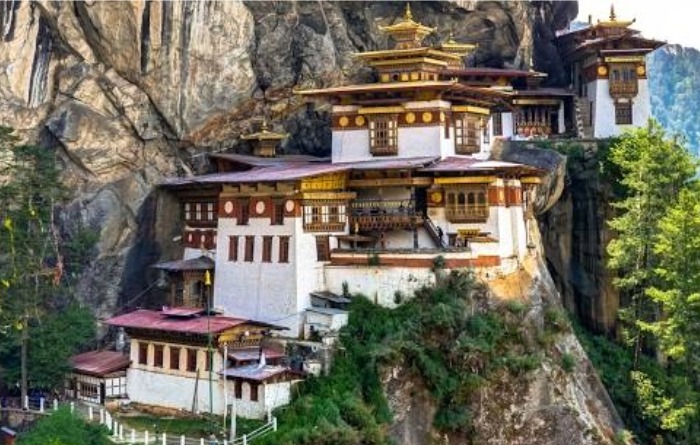Bhutan, a country high up in the Eastern Himalayas between China and India, is one of the greenest countries in the world. While many nations are struggling to reduce their carbon emissions, the Kingdom of Bhutan is already carbon negative, meaning that it draws down more greenhouse gases from the atmosphere than it emits. Its vast woodlands cover approximately 70% of the country and act as a natural carbon sink, absorbing carbon dioxide. As a result, this nation of around 750,000 people removes nearly three times as much CO2 as it produces.
Bhutan’s ability to be a net carbon sink is partly due to its natural forests and the fact that it is relatively undeveloped. But there are other factors at play.
In the video, sixteen amazing things about Bhutan are illustrated, including the role that the Bhutanese government plays in moving the levers that they can control to make the changes necessary to address the climate crisis.
For the past 46 years the Bhutanese government has opted to measure progress not through its Gross Domestic Product, but through “Gross National Happiness,” which places great emphasis on the protection of the country’s rich natural environment.
Bhutan is the only country in the world that protects its forests in its constitution. Environmental protection is enshrined in the constitution, which states that a minimum of 60% of Bhutan’s total land should be maintained under forest cover for all time. The country even banned logging exports in 1999. What’s more, almost all the country’s electricity comes from hydropower. In fact, it produces so much hydroelectricity that it sells it to neighboring countries, which Bhutan claims offsets another 4.4 million tons of annual CO2 emissions. And Bhutan claims that by 2025, increased hydroelectricity exports will let the country offset up to 22.4 million tons of CO2 per year in the region. At the COP15 climate summit in Copenhagen in 2009, and ahead of the 2015 COP21 summit in Paris, Bhutan pledged its greenhouse gas emissions would not exceed the carbon sequestered by its forests.
Although projections show its emissions could almost double by 2040, the country will remain carbon negative if it maintains current levels of forest cover. Remaining carbon negative is of utmost importance to the Bhutanese as they have a “very high environmental awareness’” and “appreciate harmony with the natural environment.” They are on a “green and low-carbon development pathway” with government initiatives to make the country’s agriculture 100% organic by 2020 and waste-free by 2030.
Although the country is helping in the fight against climate change, it is keenly vulnerable to its effects. Bhutan reports that its forests are being impacted by frequent rain and floods, which are causing landslides, and in the future, its hydropower sector could be badly disrupted by melting glaciers in the Himalayas.
Bhutan has a vested interest in trying to slow down climate change and other countries can learn from Bhutan’s decision to put climate first. Bhutan could have said ‘we want to be more connected to our neighbors, we want more industrialization, we want more economic development’ – but they didn’t.
Leadership is all about deciding what to do and doing it, and the leaders of Bhutan have decided they’re going to remain carbon negative … and they’re sticking to their guns.
Climate change is human made – we caused the problems, but we can also create the solutions, and the solutions are there if we can muster the willingness. In Bhutan the willingness comes from its wisdom and strong leadership.
Additional Resources
From CNN – Buthan Carbon Negative
Reach Out
We love talking about what we do and how it can make a difference to you.


